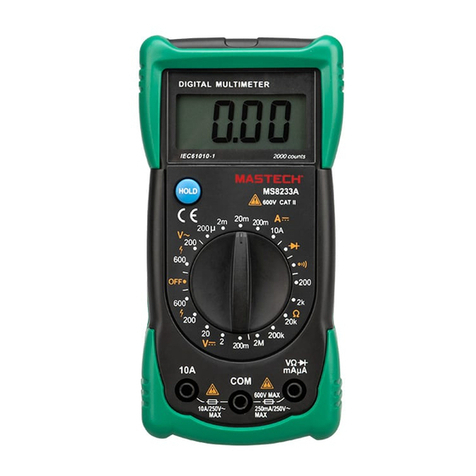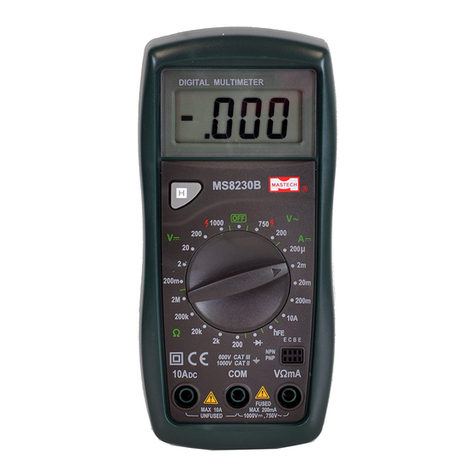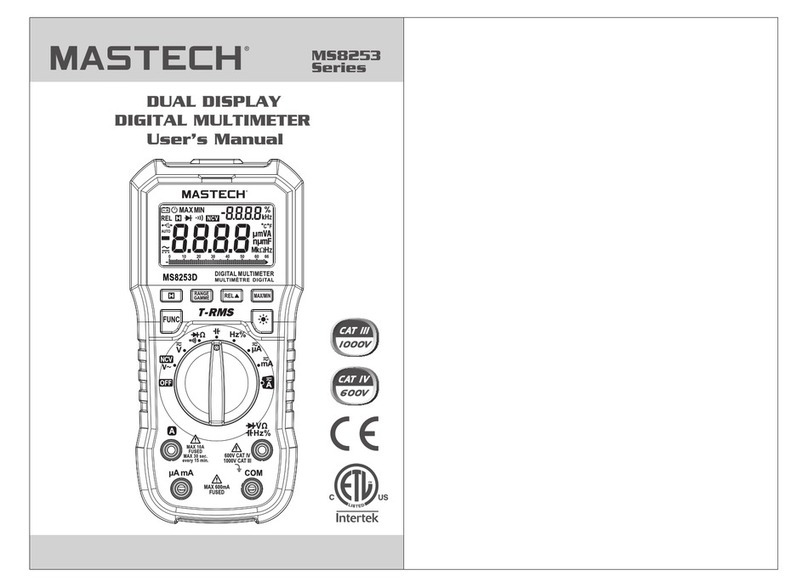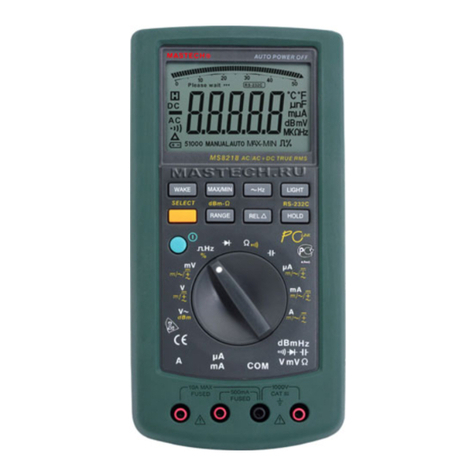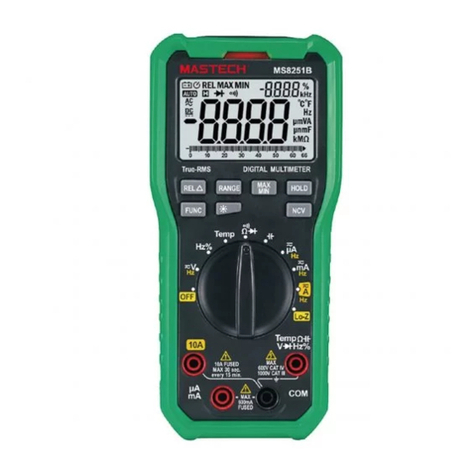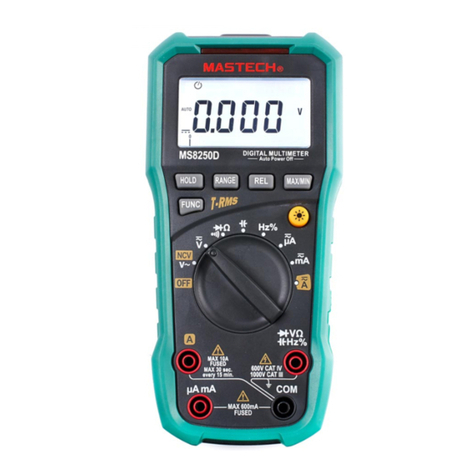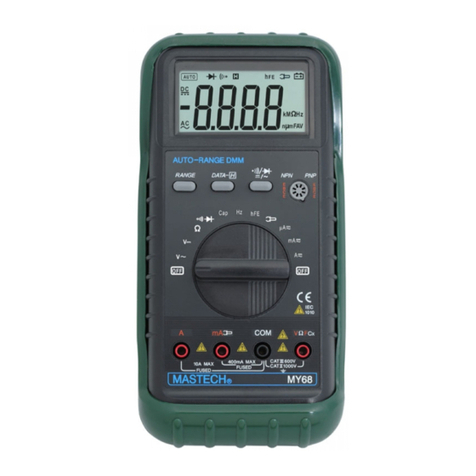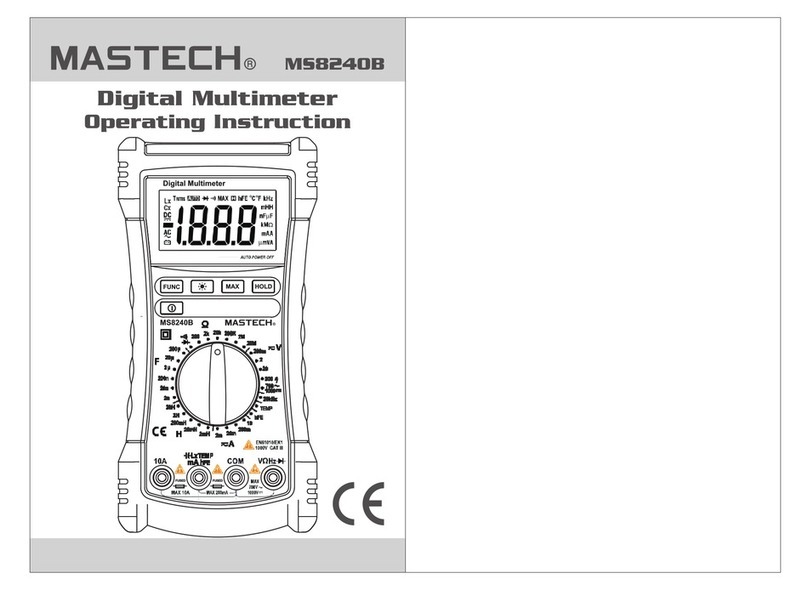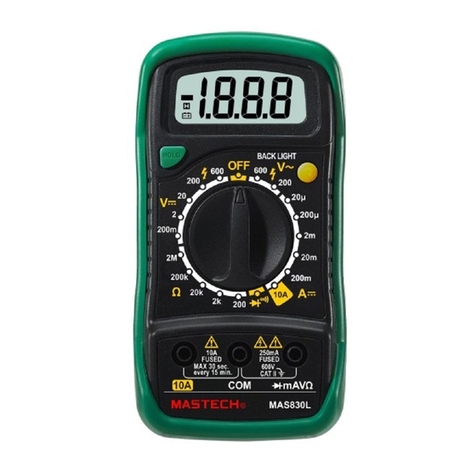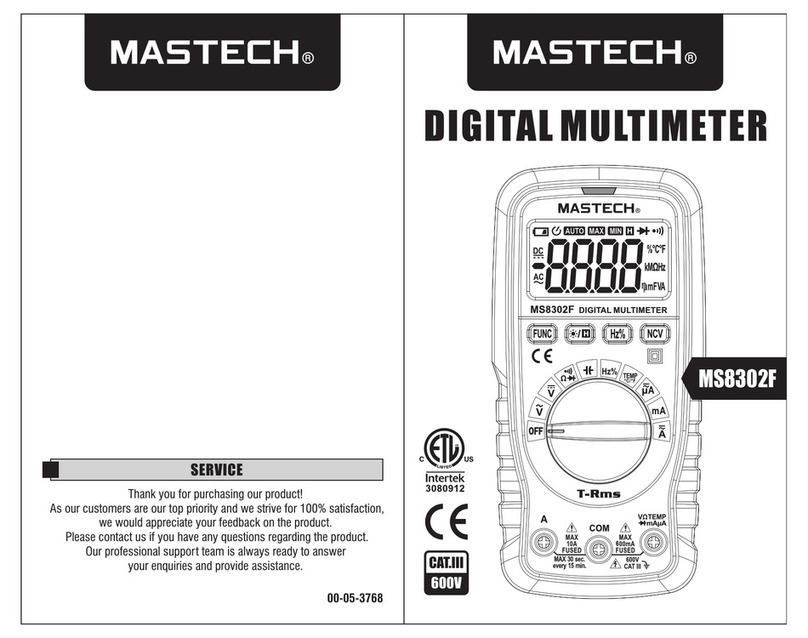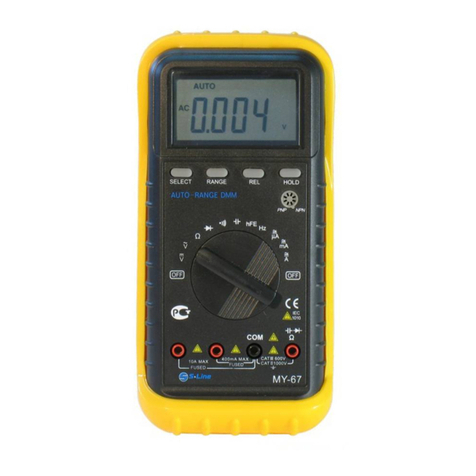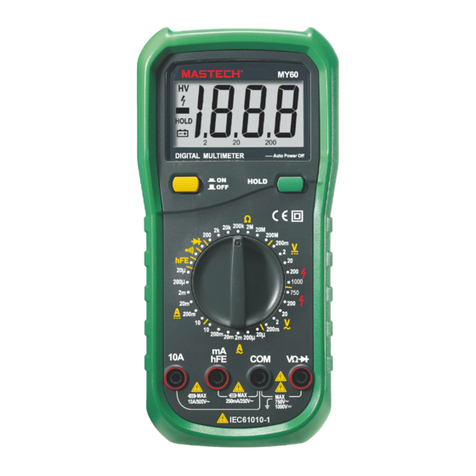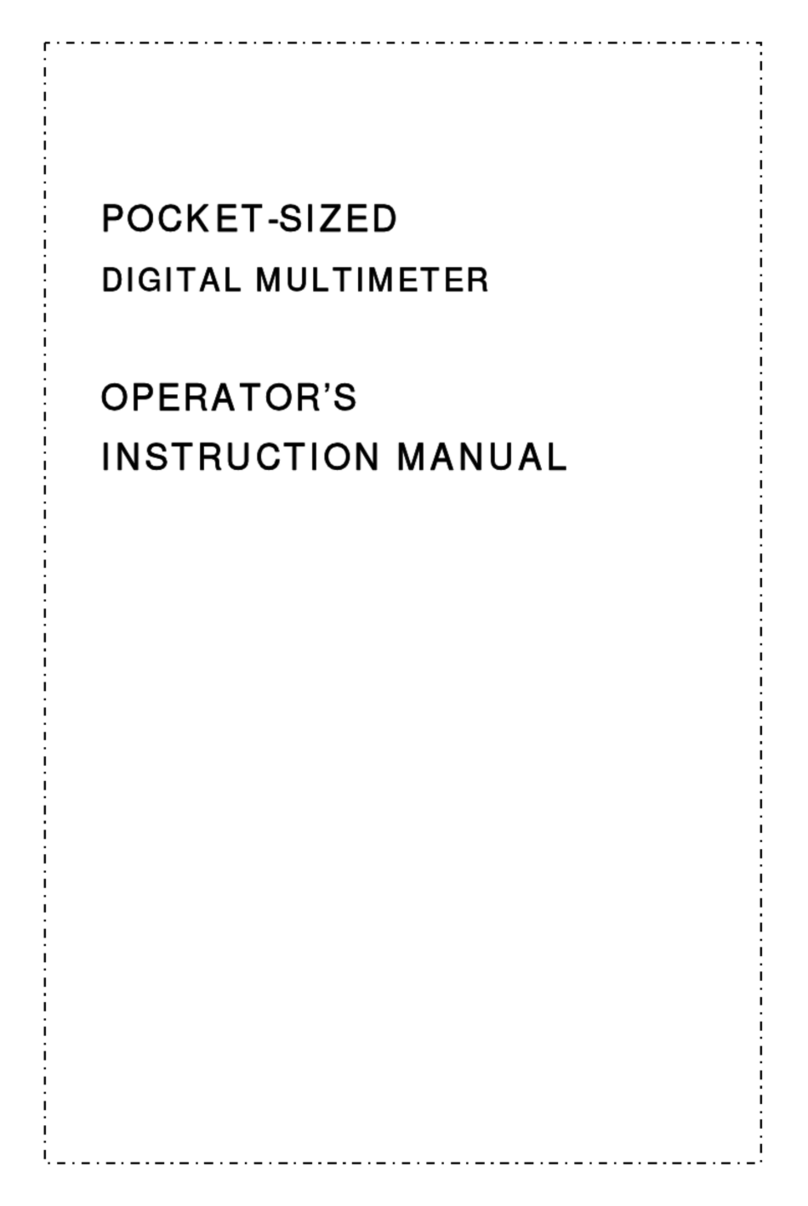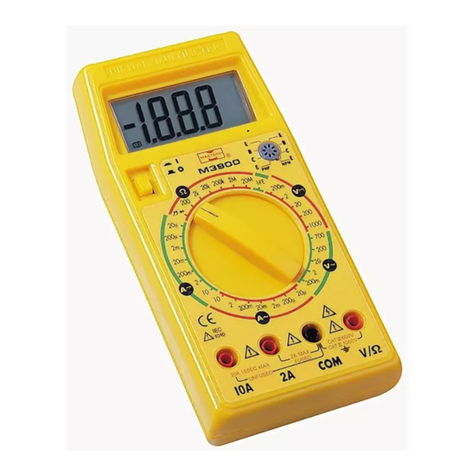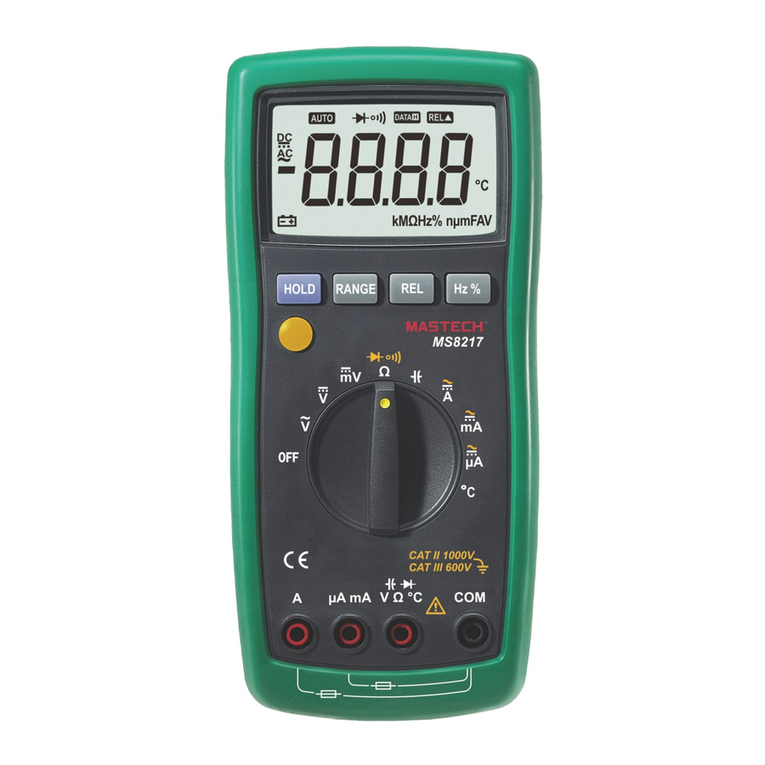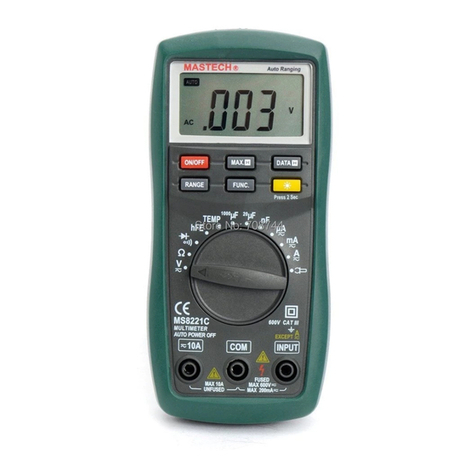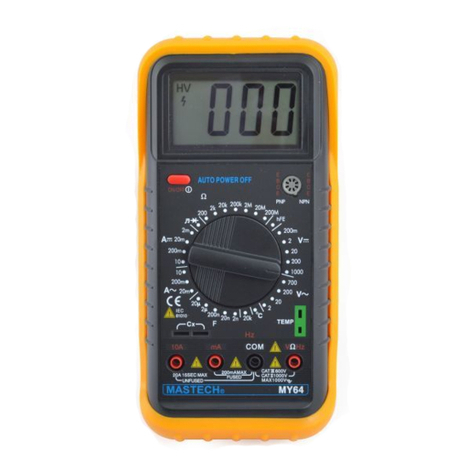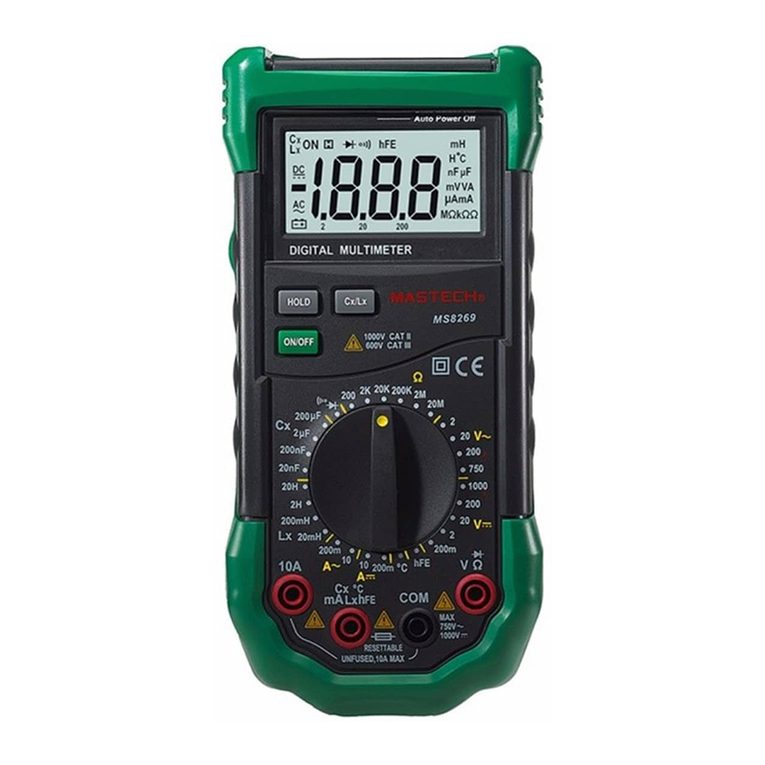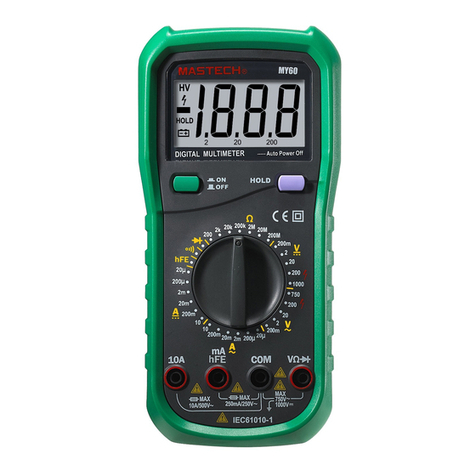
02
03
2.2 Precautions
• To avoid electrical shock or personal injury, observe
and follow all safety precautions
• Check the meter for damage before use. Do not use if
any damage is observed.
• Check the test leads for cracks or exposed wires before
using the meter. Replace if necessary.
• Ensure the meter works properly by testing a known
voltage source first.If not working properly, the
protective equipment may be damaged; have the meter
serviced before using.
• Never measure voltages that may exceed the protection
limit indicated on the meter.
• Always be careful when working with voltages above
60V dc or 30V ac rms. Keep fingers behind the probe
barriers when making voltage measurements.
• Make sure the test leads are in the correct input jacks
before measurement.
• Do not expose the meter to explosive gas, dust or vapor.
• When connecting the test leads to a measurement
circuit, connect the common lead first, then the live lead.
Reverse when disconnecting.
• Turn off power to circuit and discharge all capacitors
before making resistance, continuity or diode
measurements.
• In order to avoid incorrect DC voltage readings, check
the circuit for AC voltage first, then put the meter in the
appropriate DC voltage range.
• Turn off circuit power and check fused before connect
the leads when measuring current.Turn circuit power
on after making connection.
• Never use the meter unless the back cover is in place
and fastened securely.
• When the low battery indicator“ ”is displayed, replace
the battery.The accuracy of the meter cannot be
guaranteed while the low battery indicator is on.
• Before opening the case, always disconnect test leads
from all energized circuits.
• For continued protection against fire, replace fuse only
with the specified voltage and current ratings listed in
the manual.
• Measure known voltage with the meter to verify that
the meter is working properly. If the meter is working
abnormally, stop using it immediately. A protective
device may be damaged. If there is any doubt, please
have the meter inspected by a qualified technician.
2.3 Electrical Symbols
AC & DC (Both direct and Alternating Current)
Important safety information.
High voltage with danger.
Ground.
Double Insulation (Class II safety equipment).
Fuse must be replaced as per the specification herein.
Accord with the related EU laws and regulations
AC (Alternating Current)
AC (Alternating Current)
Conforms to UL STD. 61010-1, 61010-2-030 and
61010-2-033; Certified to CSA STD. C22.2
NO. 61010-1, 61010-2-030 and IEC STD. 61010-2-033
CAT III : MEASUREMENT CATEGORY III
is applicable to test and measuring circuits connected to
the distribution part of the building’s low-voltage MAINS
installation.
